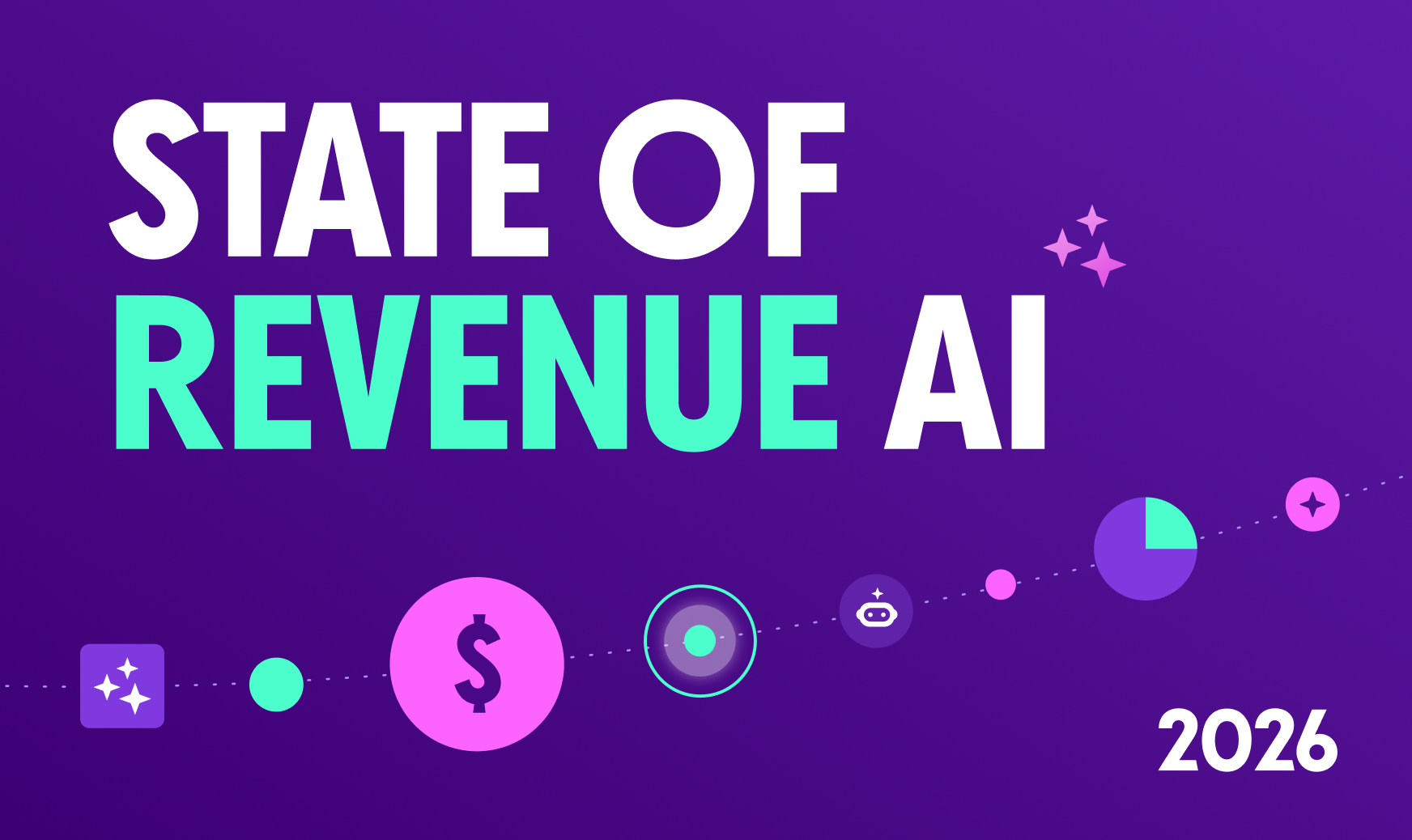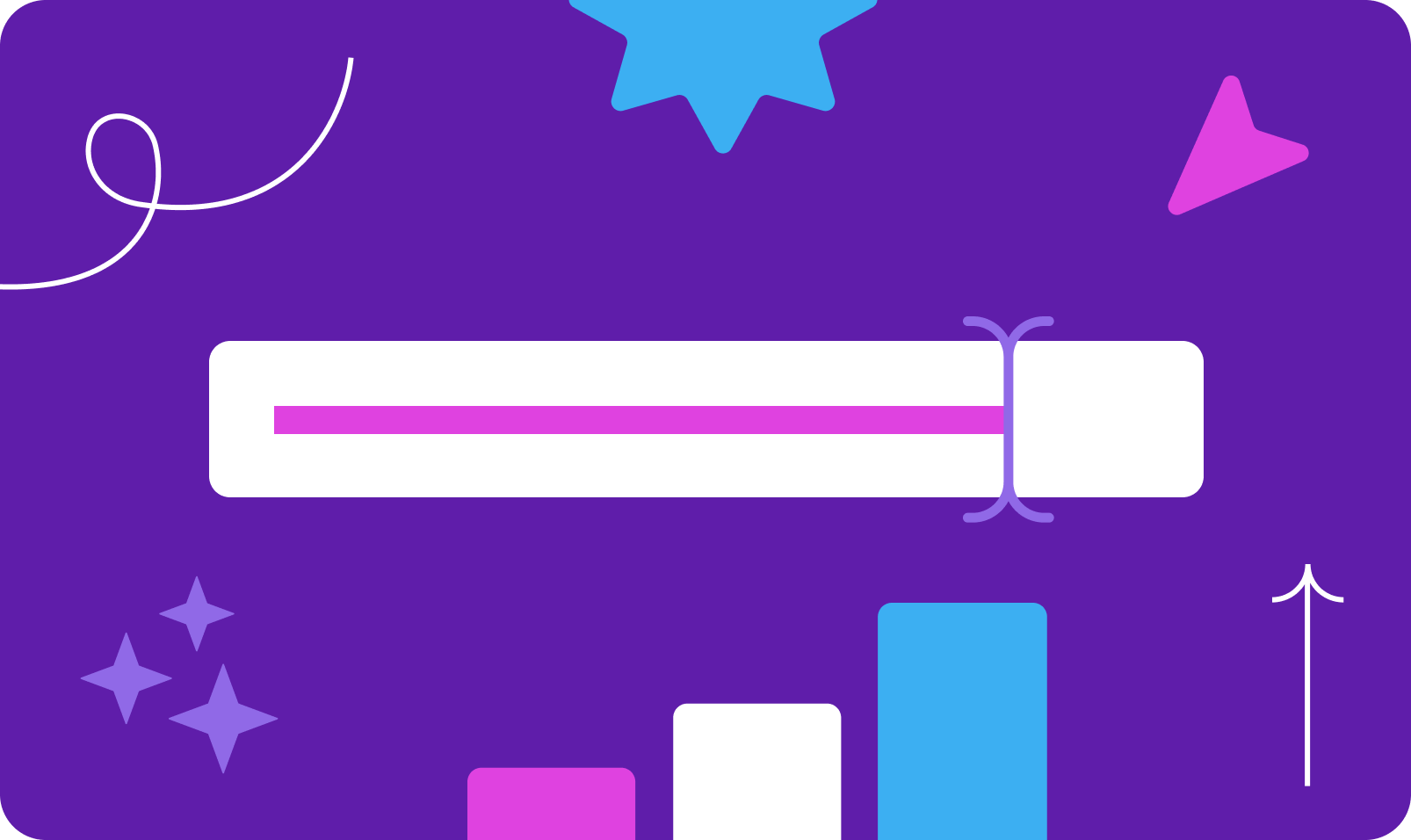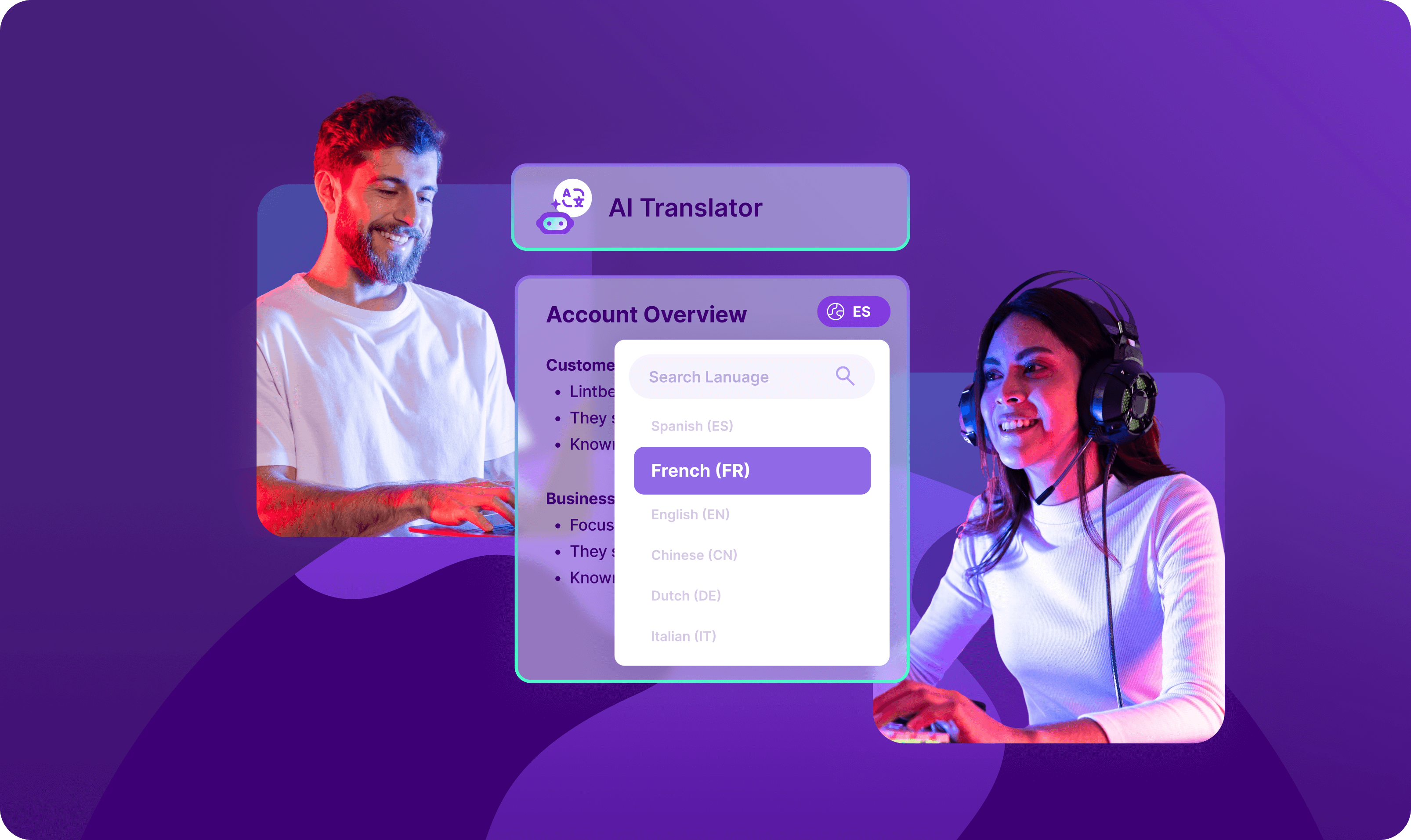Sales engagement
9 sales presentation tips that great salespeople swear by

Alli McKee
Head of Design Experience
Published on: February 14, 2019
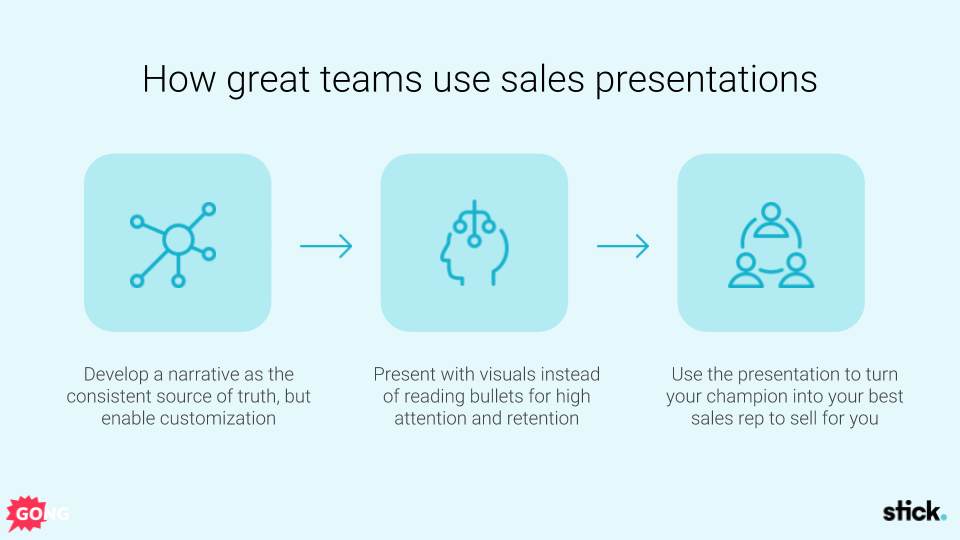
When it comes to your sales presentation, most sales leaders guess at what’s working. How could they know? Everyone in the organization is working from a different sales presentation. Some reps aren’t even using one at all. And when the PDF is actually sent off to a prospect? Whoknowswhat happens.No wonder many sales professionals “don’t believe in sales presentations.”Meanwhile, marketers tweak the top of the funnel to perfection. They have the tools to optimize ads. They A/B test landing pages until they hit peak performance. They get as many leads as possible to the door. But once that buyer isinthe door, sales leaders are blind.That doesn’t make any sense.What if you could close that gap? What if you couldmake sureyour sales presentationsticks?Top teams do – with a proven sales presentation strategy.The insights in this sales presentation guide come from two sources:
- Stick’s 200+ interviews of top sales and marketing pros
- Using the top sales presentation examples, here’s what we learned:
Part One: How to Build a Powerful Sales Presentation

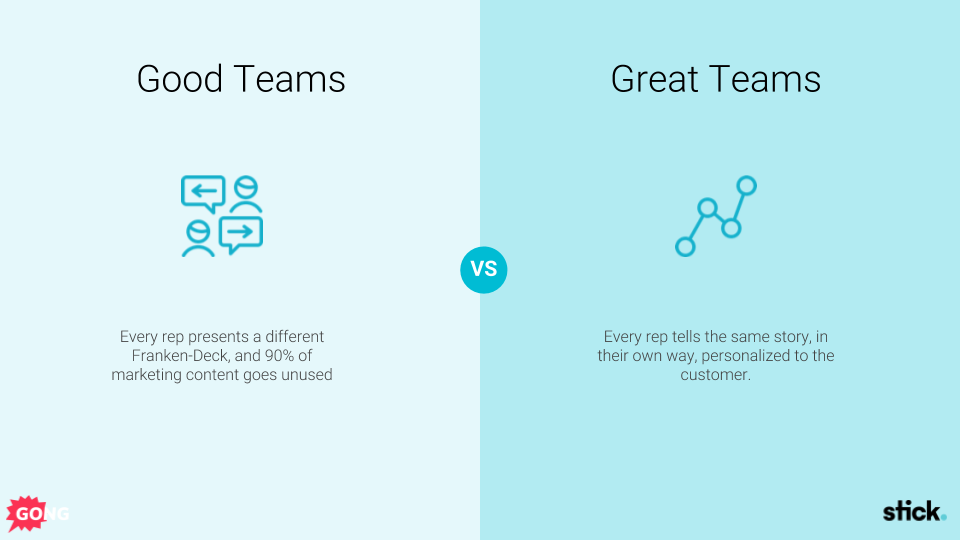
In a noisy selling environment, marketing has become everyone’s job. Marketing is no longer just for the top of the funnel. Now, it has to extend all the way through your buyer’s experience.Your sales presentation matters because it solidifies your company’s story . It is not just an email attachment or a scripted pitch. The one-size-fits-all approach doesn’t work anymore.Instead, your sales presentation is your top tool to capture your story and train sellers on it. That way, the same story shows up at every stage of your buyer’s journey, no matter who’s telling it. If you want to influence what they say, change what they see.Ingoodsales teams, marketing builds a new sales presentation quarterly. They make 50 new slides to add to the existing slide library. Some reps grab a few here and there to add to their own “Franken-Decks.” Next thing you know, 90% of the marketing-made content goes unused . You end up with 20+ reps presenting 20+ decks with 400+ slides in 10+ different fonts, colors, and brands.As one sales leader put it, “It’s like the Wild Wild West.”Sound familiar?Ingreatsales teams, the story is co-developed with sales and marketing. They capture the story in a training tool – the sales presentation – that leaders use to rally reps around one framework:
Sales Story = Change + Pain + Gain + Proof.
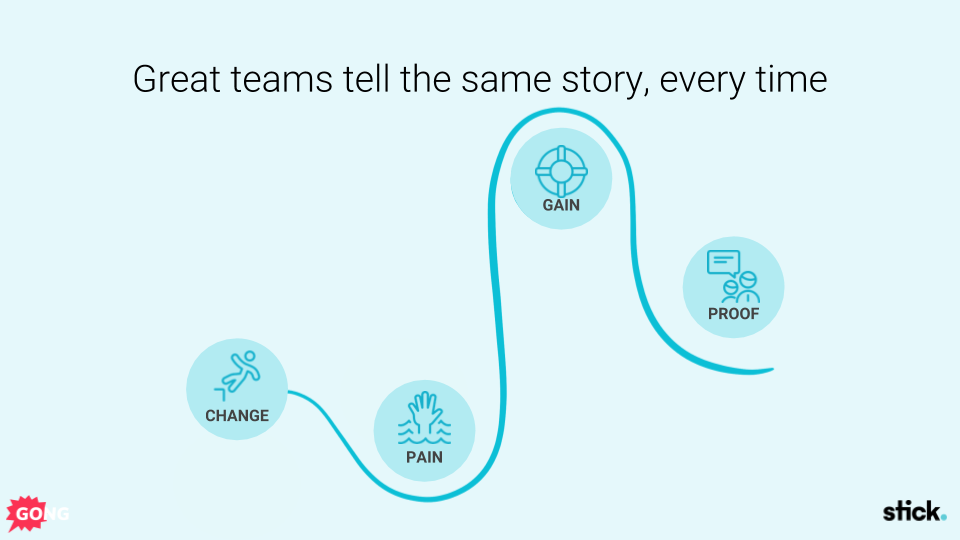
Here are our top tips for building a compelling narrative:
1. Start with change.
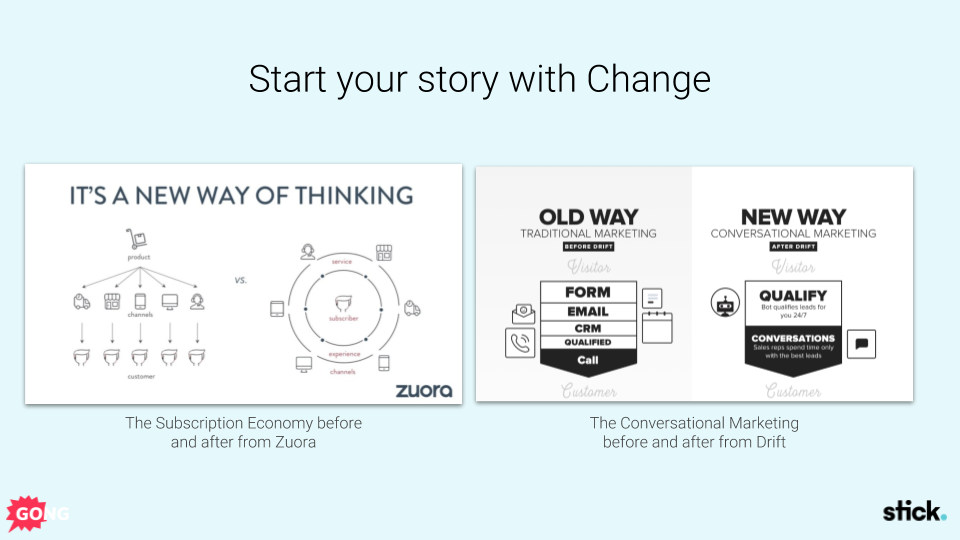
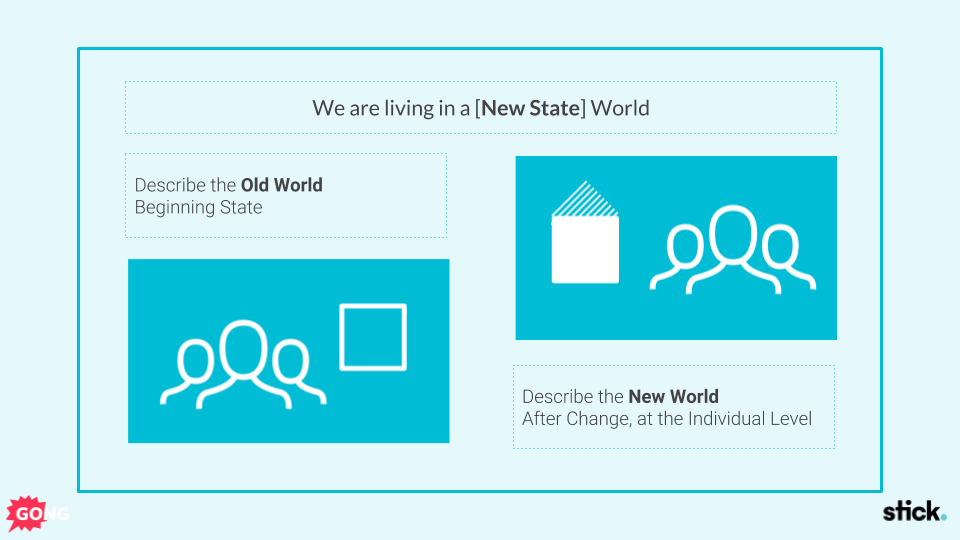
If you doone thing to build a great sales pitch , do this: nail your before and after. This hooks their attention. As the Hollywood legend Robert McKee writes, “What attracts human attention is change.”When you show a change in the worldthat is bigger than your company,it frames your offering as inevitable. You want them to think,“Wow, this seems like the way the world is moving. We should get on this train now!”The most sales presentation example here is from Zuora, via Andy Raskin’s blog post . Perhaps more powerful than clicking through the presentation, though, is this simple visual (left), which shows how the Subscription Economy has changed business as we know it:Another excellent example (right) comes from the Marketing geniuses at Drift. They used this storytelling technique to create a new category: Conversational Marketing. Whether you’re refreshing your sales pitch or starting from scratch, the first step is to build out your own “before and after.”
2. Show them their pain.
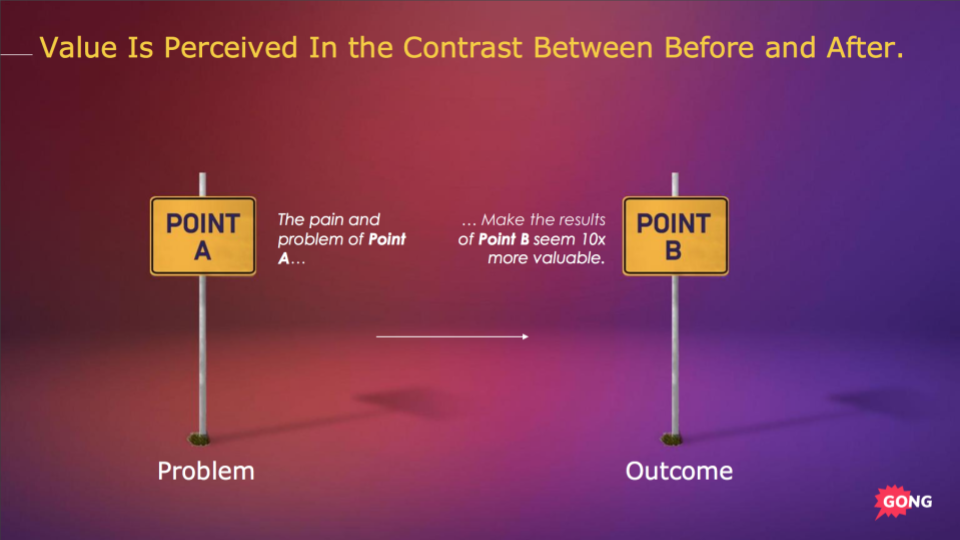
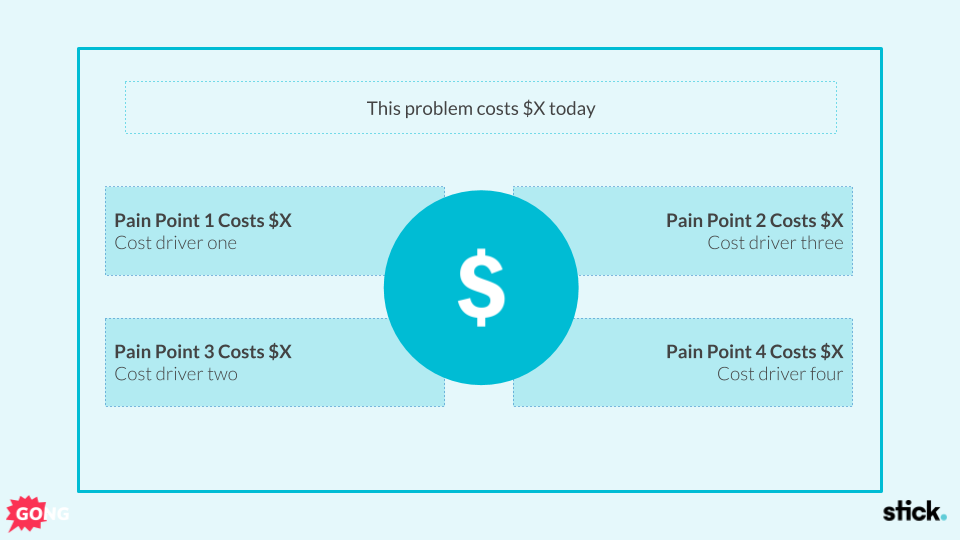

Once you’ve established your story’s premise of change, then it’s time to meet the main character: your Customer. Fromtheirperspective (not your company’s), dive deeper into the pain of today. This is your chance to take down the biggest competitor you have – the status quo.In Gong’s Customer Stories that Sell training, Chris Orlob explains why you have to dive into the pain before you can jump to the gain. By digging into where they are today – Point A – you facilitate self-discovery and help them realize that they have a problem.To twist the knife, quantify the problem. This helps your buyer’s logical brain justify the decision. This is what it looks like:As the folks at Gong have said, “If your story describes their problem better than they can describe it themselves, they will automatically assume you have the best solution .”PS: Sign-up for the FREE storytelling video course here :
3. a glimpse of the gain.
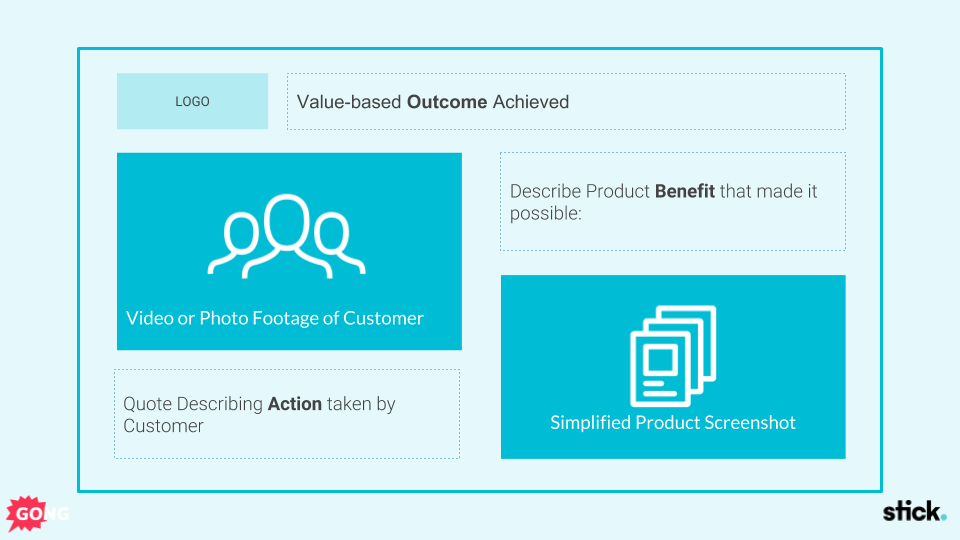
Now that you’ve pulled them down, it’s time to bring them back up. Show them the gain your product enables.Good sales presentations show what the product can do. Great sales presentations show what thecustomercan do.To show the gain, nail three questions: (1) WhatOutcomedid the customer achieve (2) WhatActiondid the customer take to achieve this? (3) What productBenefitor insight made that action possible?
4. Provide proof.
After you set up the change, make them feel the pain, and show the gain, it’s time to provide proof. They’ve already made the emotional decision to buy in. Now you have to satisfy the rational brain with evidence.There are two elements to showing proof:
- Showing value(“Similar Company X was like you, but then they achieved these results”)
- Showing volume(“10,000+ companies have joined”)
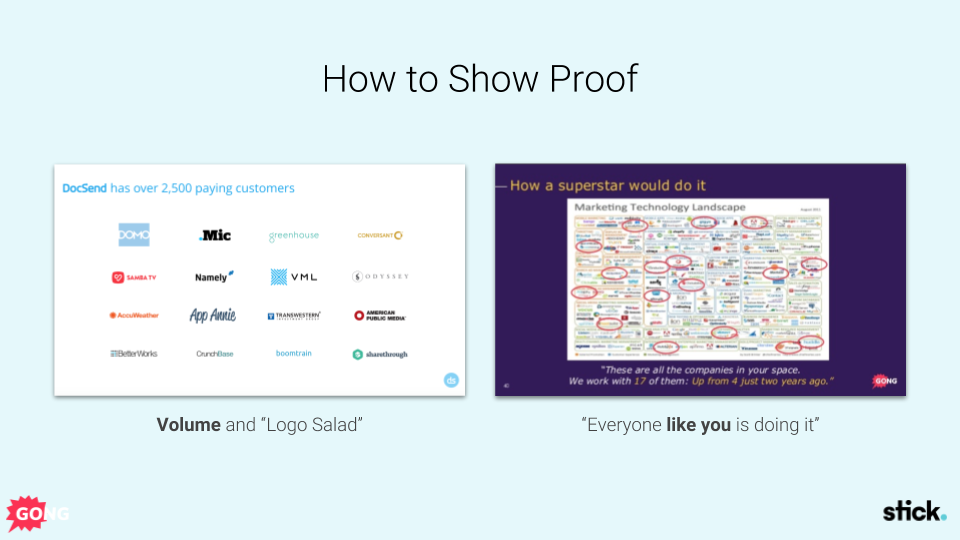

The best social proof has an element of urgency as well. As Gong puts it, the superstar way is to say, “These are all the companies in your space. We work with 17 of them. Up from 4 just two years ago.”Why it works.Structuring your sales pitch around a narrative increases engagement. That engagement can’t stop with marketing’s landing page.In one sales case study, DocSend saw engagement rates triple after restructuring their sales presentation around a narrative.Retention increases by 60-70% when you use stories to convey information. Compare that to only 5-10% when you solely use statistics.Now that you’ve prepared for customer meetings by turning your sales presentation into a tool, it’s time to use it.
Part Two: How to Deliver Your Sales Presentation
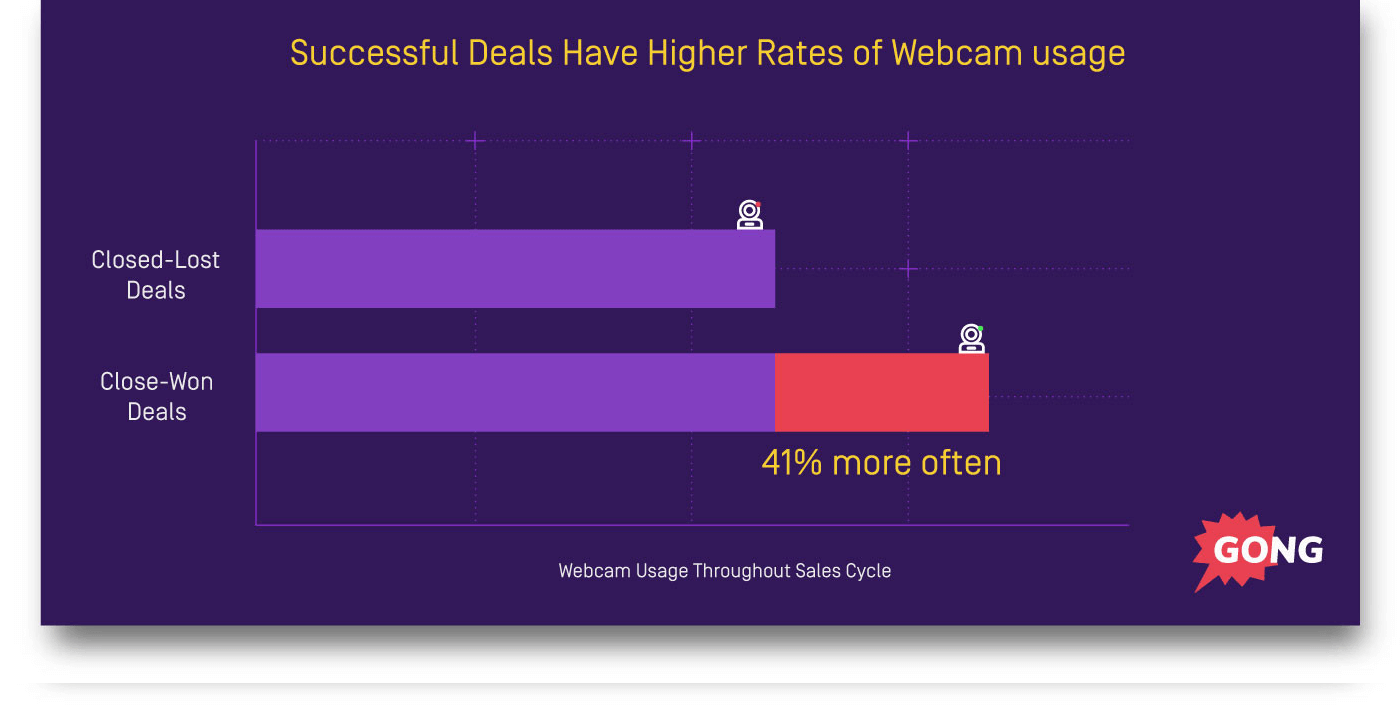
Visual sales meetings are thing of the past. Thanks to the webcam and the explosion of web conferencing platforms, sales phone calls are where it’s at. And it’s working: “ Closed deals involve using webcams 41% more often than lost deals.”With this shift to visual meetings, new attention real-estate has opened up, and the bar for sales presentation skills has been raised.Not only does using a visual sales pitch increase your close rates, but it also increases your revenue per deal. As Chet Holmes writes inThe Ultimate Sales Machine,
“Take the same product and present it directly to the prospect by talking about it and then take that same product and present it using visual aids.
You will find that,not only do you close a higher percentage of prospects, but they will actually pay more money for the same product.”
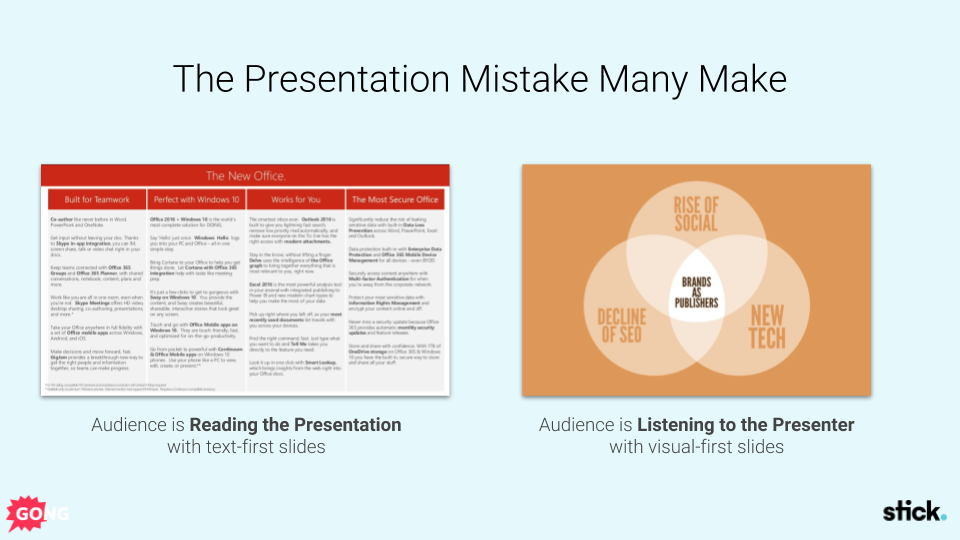
Yet, ingoodsales teams, sales reps open the sales presentation of 20+ bullet point slides and start to present. Studies have found that a prospect’s brain can take in information at 400-500 words per minute. But a presenter can only speak at 125 words per minute.This means that prospects are reading silently instead of listening. Sure, this makes for a consistent talk track, but it also loses the prospect’s attention.Ingreatsales teams, reps use visuals to convey the narrative. Their personality and presentation (rather than a bullet-point talk-track) captivate the customer’s attention.Gong’s recent research also shows that winners stick to the 9 minute rule of sales presentations.Here’s how to use this new sales performance insight to improving your close rate:
1. Replace text with visuals.
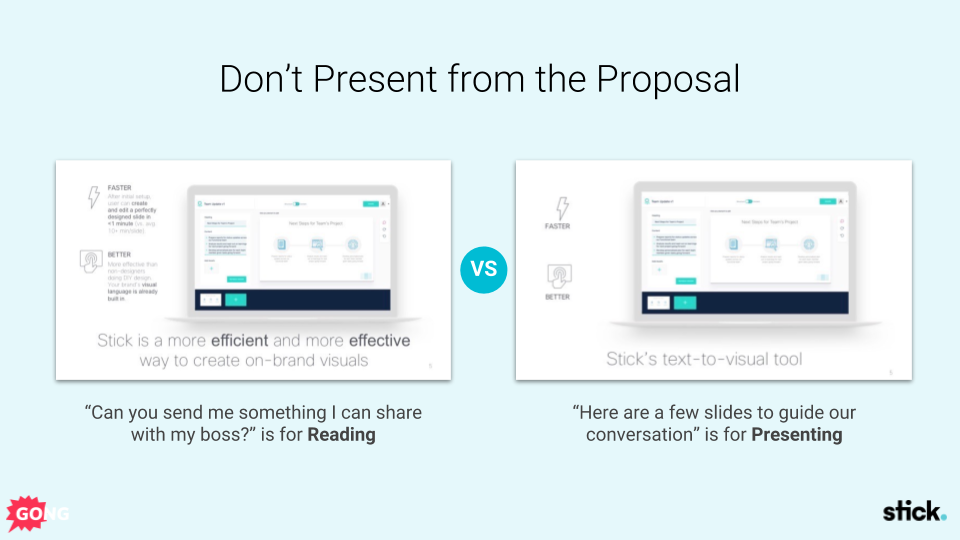
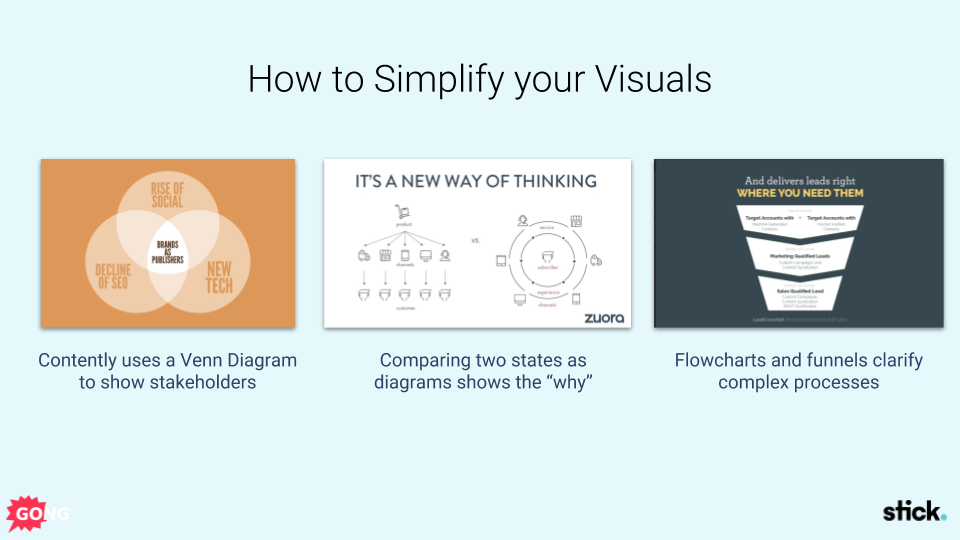
A customer cannot read and listen at the same time. “Multi-tasking when it comes to paying attention is a myth,” says John Medina, author of Brain Rules . If you want to maximize your persuasion potential, you need to shift your customer’s job from readingtolistening.First, cut your text. Great sales teams don’t present proposals . Even if the core content is the same, presentations are meant to be presented and proposals are meant to be read. If you present a proposal, your prospect is going to be reading, not listening.Next, replace any text you can with visuals. A simple visual aid is the best way to ensure your message sticks with your prospect.Combining visuals with text also increases understanding and retention. This works because of thePicture Superiority Effect. As John Medina writes,
“Human PSE is truly Olympian. Tests performed years ago showed that people could remember more than 2500 pictures with at least 90 percent accuracy several days post-exposure, even though subjects saw each picture for about 10 seconds. Accuracy rates a year later still hovered around 63 percent….
Sprinkled throughout these experiments were comparisons with other forms of communication, usually text or oral presentations. The usual result was PSE demolishes them both.”
2. Keep it to 9 minutes.

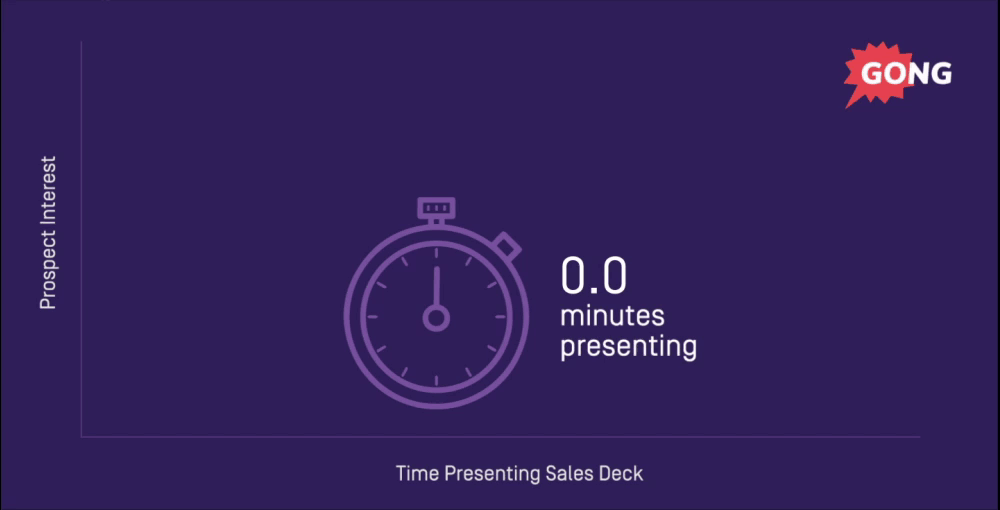
Great sales reps gut their sales presentations to the core. They stick to the 9 minute rule . You should target 2-3 slides per minute, and keep it to 9 minutes total to avoid losing their attention – and the deal.Why 9 minutes? Gong’s recent research coupled with neuroscience studies found that “to command the attention of your customer, you must introduce a ‘brain-perking’ change of pace.”
3. Author your own content.
Good salespeople take the stock deck from marketing and sub out logos. Great salespeople make their own slides.“Ludicrous! I’m a seller, not a designer!” you say.In a world where most design tools are clunky and most sales reps have no design skills, I’agree. It’s all too easy to just stick with the sales presentation template you’ve been given. But if you start simple,authoring some of your own slides is a powerful persuasion tactic.As Erik Peterson and Tim Riesterer call out inConversations that Win the Complex Sale, instead of taking marketing’s slides verbatim, build some of your own materials. “Who gets credit for authorship then? You do. And that automatically elevates you in the eyes of your prospect. You become more than a slide jockey.”You become the expert.This works because of the Authority principle : people follow the lead of experts. You have to signal that you are an authority on this problem. Authorship is a powerful form of authority.
Part Three: Following Up After Your Sales Presentation
You’ve built a clear, story-driven sales pitch. You’ve tailored the presentation, and presented with authority during your customer call. They’ve said they’re ready to buy. Your job is done, right?Wrong. There is an average of 6.8 people involved in a B2B buying decision today, up from 5.4 two years earlier. Now,thebuyer is onlyoneof the buyers.Even if your champion is ready to buy, you now have to equip them to sell internally on your behalf. Without an engaging, presentable record of your conversations, your deal turns into a game of telephone.Goodsales reps follow up with a bullet-point email outlining key takeaways from the meeting. But bullet-points don’t travel well. As Cory Bray and Hilmon Sorey discuss inTriangle Selling, “different stakeholders relay information to each other based on their best recollection of what they heard.”The deal turns into a game of telephone.Greatsales reps know that content closes deals. As a result they use the follow-up opportunity to transform their sales presentation into a buying guide for their champion, helping them look good in front of their boss.Here’s how to do this:
1. Turn discovery into custom content.


As Dale Carnegie writes inHow to Win Friends and Influence People,“The only way on earth to influence other people is to talk about whattheywant and show them how to get it.” The purpose of your discovery call was to understand what they want. Now, you can use that to show them how to get it.Great salespeople know this. They start the follow-up document with the key topics covered in discovery, in the prospect’s words. As Doug Landis says, “Your first slide needs to be about what you’ve learned from YOUR CUSTOMERS. Use the voice of your customers to give you credibility.”Remember the context you covered?…and what they said about their pain?Those are your most important pages. Because the words come from them, it’s tailored to their perspective. And by recapping your conversation in writing, it strengthens their commitment to what they said about the problem (or welcomes an opportunity for them to add new, clarifying information).
2. Build your champion’s buying guide for them.
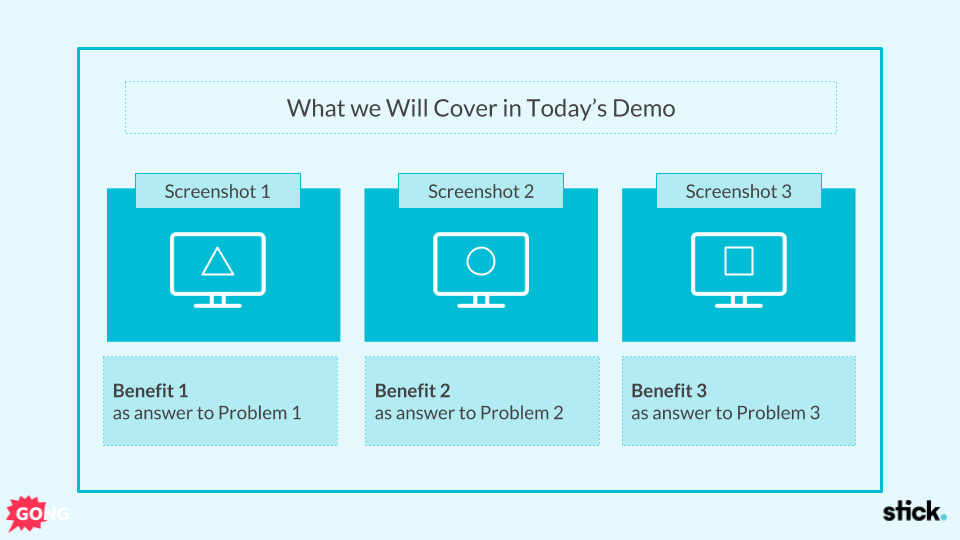

If you’re worried about your reps falling back to feature selling, what do you think your champions are doing? Building their buying guide for them is the best way to ensure this doesn’t happen.It will also make you a better seller over time, as it forces you to adopt the customer’s point of view, rather than your own. Plus, most competitors won’t go that extra mile.“Making slides isn’t a sales person’s job!”they think. Now you have an advantage on how they talk about your solution. Your champion presents the same story you do, but in their own words.Those pain points they mentioned in discovery? Make sure your product’s page matches perfectly to those three issues:This strategy results in a “Trojan Horse” effect. Buyers are bombarded with (not great) sellers, so they’re accustomed not to trust them – or their materials. But when the presentation comes from the customer’s point of view, recapstheirproblem, and lays out all oftheiroptions according totheircriteria, they’re more likely to let it inside the walls. Then, they can adopt it as their own.And when they adopt it as their own? You’ve won the deal.Not only does the pitch work better coming from the inside, but your champion appreciates the work you saved them.This works because your champion is more likely to favor your solution because you did them a solid and saved them a ton of work. This is the Reciprocity principle at play. Use it to your advantage.
3. Build it intheirbrand.
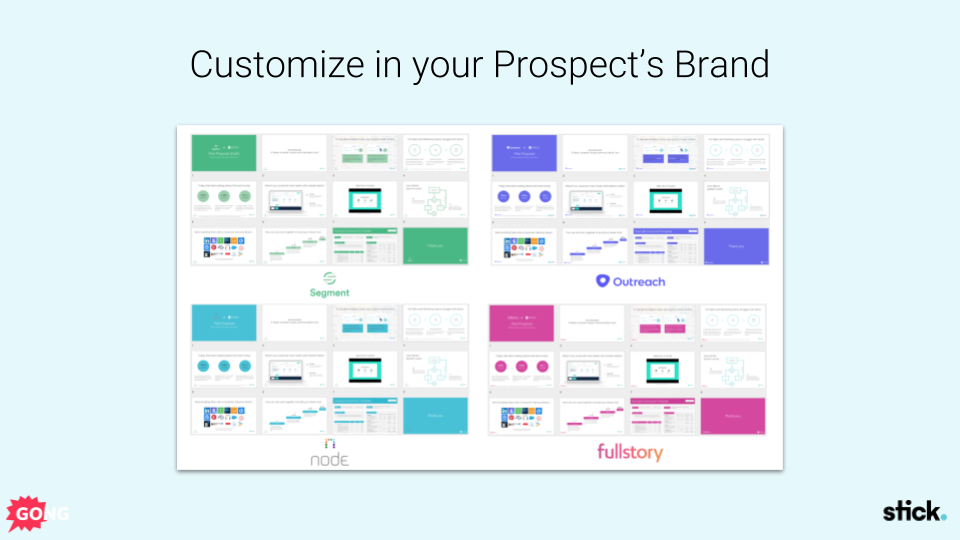
Buyers are accustomed to seeing their logo on cover pages of sales presentations. That’s what every good sales rep does. But great sellers know that going the extra mile and using the prospect’s brand guarantees thatwow!moment – and higher adoption.If a deal really matters, you need to frame the message as coming from the inside out, not the outside in. And this is a visual tactic that ensures your sales presentation is coming from your customer’s voice .
Conclusion: The Ultimate Sales Presentation

AsUltimate Sales Machine author Chet Holmes says, “If you ignore the power of incorporating a visual component into your sales and marketing process, you may as well deliver it in a closet.”Now is the time to implement that sales strategy you need to take your team from good to great. Streamline your story, maximize your meeting impact, and ensure your champion can carry your message to get deals done.PS:Don’t forget! Get your FREE 9-point checklist for crafting sales presentations that SELL here:—About the Author: Alli McKee is the CEO and Founder of Stick.ai , a visual communication platform for B2B Sales and Marketing teams to build better visual sales content, in half the time.

Head of Design Experience
Alli McKee leads Design Experience at Canva, overseeing a global team shaping the company’s Visual Suite and advancing visual productivity through AI.
Previously, she founded Stick.ai (acquired by Google) and led the creation of Google Vids.
Her work sits at the intersection of design, AI, and product innovation.
Discover more from Gong
Check out the latest product information, executive insights, and selling tips and tricks, all on the Gong blog.
